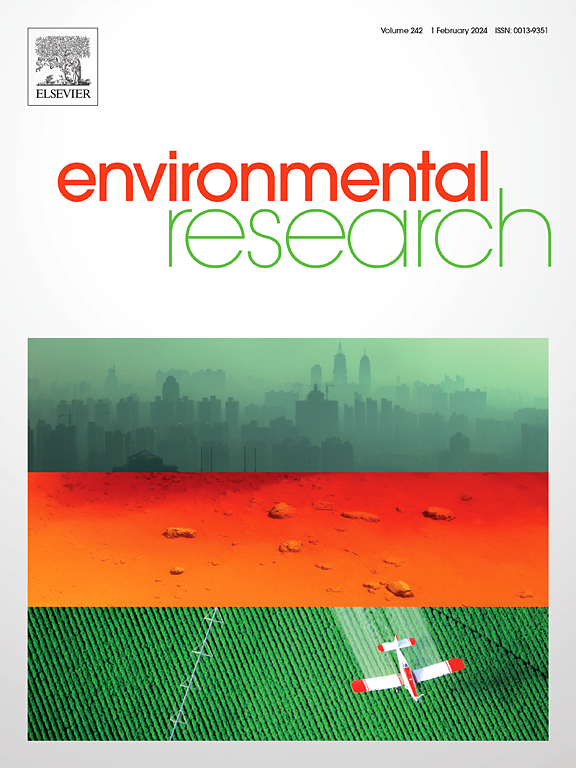新型高效双吸附Cr(VI)和SDS的ACS膜:机理和实际应用
IF 7.7
2区 环境科学与生态学
Q1 ENVIRONMENTAL SCIENCES
引用次数: 0
摘要
本研究介绍了一种新型的ACS膜作为双功能吸附剂,用于有效去除水系统中的六价铬(Cr(VI))和十二烷基硫酸钠(SDS)。指导了全面的批量实验,并使用响应面法(RSM)对结果进行了严格验证。对Cr(VI)和SDS的最大吸附量分别为467.14 mg g−1和244.47 mg g−1。SDS对Cr(VI)的吸附符合Freundlich等温线模型(R2 = 0.985),表明其为多层吸附;SDS对Cr(VI)的吸附符合Langmuir等温线模型(R2 = 0.935),表明其为单层吸附。动力学研究表明,Cr(VI)的吸附符合拟二级模型(R2 = 0.994),而SDS的吸附符合拟一级模型(R2 = 0.975),阐明了不同的吸附机理。热力学分析证实了Cr(VI)和SDS的吸附过程都是自发的、焓驱动的。利用纺织工业的实际流出物样品对膜的性能进行了评价,证明了其在复杂基质中的实际适用性。此外,再生研究表明,在五个循环中持续的吸附效率,突出了材料的可重复使用性和经济可行性。这项工作强调了ACS薄膜作为解决双重污染挑战的多功能和可持续材料的潜力,为环境修复中的可扩展应用铺平了道路。本文章由计算机程序翻译,如有差异,请以英文原文为准。
Novel ACS film for efficient dual adsorption of Cr(VI) and SDS: Mechanistic insights and practical applications
The current study introduces a novel ACS film as a dual-functional adsorbent for the efficient elimination of hexavalent chromium (Cr(VI)) and sodium dodecyl sulphate (SDS) from aqueous systems. Comprehensive batch experiments were directed, and the results were rigorously validated using Response Surface Methodology (RSM). The maximum adsorption capacity was found to be 467.14 and 244.47 mg g−1 for Cr(VI) and SDS, respectively. The adsorption of Cr(VI) followed the Freundlich isotherm model (R2 = 0.985), indicating multilayer adsorption, while SDS adhered to the Langmuir isotherm (R2 = 0.935), suggesting monolayer adsorption. Kinetic studies revealed that Cr(VI) adsorption was best defined by the Pseudo Second Order model (R2 = 0.994), whereas SDS adsorption conformed to the Pseudo First Order model (R2 = 0.975), elucidating distinct adsorption mechanisms. Thermodynamic analyses confirmed that the adsorption processes for both Cr(VI) and SDS were spontaneous and enthalpy-driven. The film performance was evaluated using real effluent samples from textile industries, demonstrating its practical applicability in complex matrices. Additionally, regeneration studies showed sustained adsorption efficiency across five cycles, highlighting the materials reusability and economic viability. This work emphasizes the potential of the ACS film as a versatile and sustainable material for addressing dual pollution challenges, paving the way for scalable applications in environmental remediation.
求助全文
通过发布文献求助,成功后即可免费获取论文全文。
去求助
来源期刊

Environmental Research
环境科学-公共卫生、环境卫生与职业卫生
CiteScore
12.60
自引率
8.40%
发文量
2480
审稿时长
4.7 months
期刊介绍:
The Environmental Research journal presents a broad range of interdisciplinary research, focused on addressing worldwide environmental concerns and featuring innovative findings. Our publication strives to explore relevant anthropogenic issues across various environmental sectors, showcasing practical applications in real-life settings.
 求助内容:
求助内容: 应助结果提醒方式:
应助结果提醒方式:


